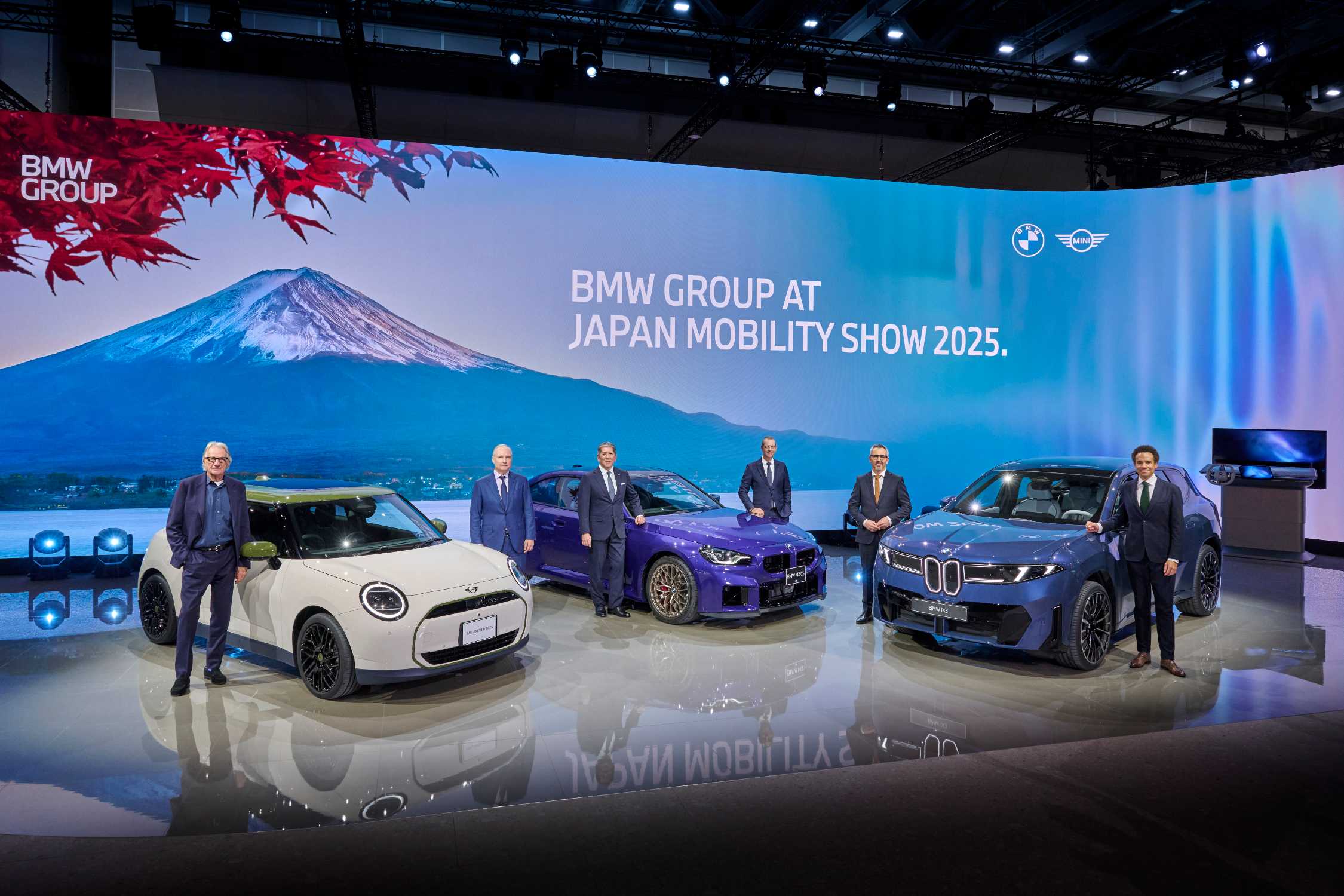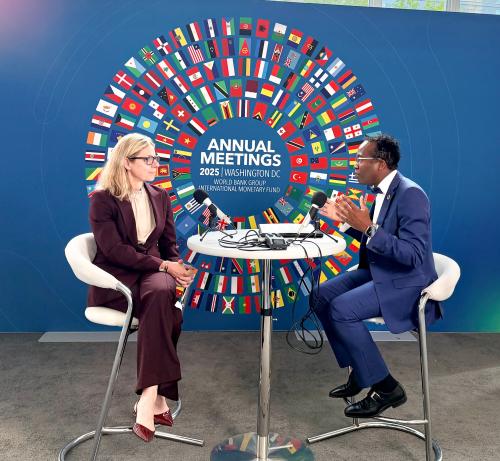Unlock the Editor’s Digest for free
Roula Khalaf, Editor of the FT, selects her favourite stories in this weekly newsletter.
While many Parisians covet a home emblematic of the city’s architecture – stately, Haussmannian, or even older…

Unlock the Editor’s Digest for free
Roula Khalaf, Editor of the FT, selects her favourite stories in this weekly newsletter.
While many Parisians covet a home emblematic of the city’s architecture – stately, Haussmannian, or even older…

Shortly before he died in 1946, the photographer Alfred Stieglitz remembered taking a shot of one of one of New York ‘s most famous structures, in 1903. “I suddenly saw the Flatiron Building as I had never seen it before,” he said. “It…

Munich. BMW and MINI will be hosting
attention-grabbing stands at the Japan Mobility Show 2025. Taking to
the stage in Tokyo on 31 October – 9 November will be a host of
future-focused BMW and MINI models and technologies, including the
first new Neue Klasse model BMW iX3, hydrogen fuel cell technology,
the MINI family including new MINI Paul Smith Edition, the
special-edition BMW M2 CS* and the BMW Concept Speedtop concept car.
BMW Motorrad will also be represented at the event – in the form of
the fully electric BMW CE 02 and the BMW M 1000 RR ridden by Toprak
Razgatlıoğlu to his second successive FIM Superbike World Championship
crown in 2025. On 29 and 30 October, representatives of the
international media will have an early opportunity to take in the
compelling exhibits from the three brands at the 1,100-square-metre
stand in Tokyo’s Big Sight exhibition centre. Visitors to the show can
also experience in-car gaming with AirConsole, which is making its
debut with BMW Operating System 8.5. The new BMW iX3 will be among the
vehicles offering customers this function, which brings with it
world-renowned titles such as UNO® Car Party!, Hot Wheels: Xtreme
OverdriveTM and PAC-MANTM Championship Edition.
Asian premiere for the new BMW iX3, the first new Neue Klasse model.
The Japan Mobility Show will host the Asian premiere of the first new
Neue Klasse model: the BMW iX3. Lining up alongside the iX3 will be
revolutionary technologies that point the way to the future of the BMW
Group as a whole. Visitors to the Japan Mobility Show will see the new
BMW iX3 reveal technological leaps forward in a host of different
areas: electric mobility, display and control/operation concept,
digitalisation, connectivity, design and sustainability. All future
BMW models will benefit from the innovations brought by the Neue
Klasse – regardless of the type of drive system they use.
Production of the BMW iX3 for Japan is scheduled to begin in March
2026, with sales through the Japanese BMW dealer network currently due
to begin in the second half of 2026. The BMW iX3 launches an all-new
design language for the BMW brand that faithfully conveys the
technological advances achieved. The revolutionary display and
control/operation concept BMW Panoramic iDrive with the new BMW
Panoramic Vision and new BMW Operating System X redefines the user
experience and creates flawless driver orientation in the BMW mould.
The zonal electronics architecture featuring four high-performance
computers – the “superbrains” – provides the basis for the
software-defined vehicle. One of these high-performance computers is
the Heart of Joy: with the BMW Dynamic Performance Control software
developed fully in-house, it can manage the driving characteristics of
the overall vehicle from a standstill to the dynamic limit. As the
first new Neue Klasse model – with sixth-generation (Gen6) BMW eDrive,
cylindrical-cell battery and new electric motors – the new BMW iX3
embodies major technological progress. A maximum charging rate of 400
kW enables 372 km (231 miles) of range to be added in ten minutes, and
bidirectional charging functions turn the car into a powerbank on wheels.
The new BMW iX5 Hydrogen* from 2028.
Product diversity continues to be a key success factor for the BMW
Group. A wide-ranging portfolio of drive systems – encompassing
internal combustion engines, plug-in hybrids, battery-electric drive
systems and, starting with the new BMW iX5 Hydrogen in 2028, hydrogen
fuel cell technology – lays the foundations for successfully meeting
the varying demands and needs of customers worldwide both now and in
the future.
The hydrogen drive technology is based on the third-generation fuel
cell system that the BMW Group is developing in collaboration with the
Toyota Motor Corporation. This technological advance paves the way for
a system with a more compact design that is also more powerful and
efficient, thereby increasing range and output at the same time as
reducing energy consumption. Competence centres in Munich and at BMW
Group Plant Steyr are building initial prototypes for this technology.
And BMW Group Plant Landshut is supplying additional components for
the drive system.
World premiere for the MINI Paul Smith Edition.
Back in 1998, Paul Smith lent his signature to a limited-run edition
of the classic Mini. And MINI and the British designer have since
linked up to bring a number of other projects to fruition. Fast
forward to the present day and the Japan Mobility Show 2025 will
provide the setting for the latest milestone in this tradition-steeped
collaboration: the world premiere of the new MINI Paul Smith Edition.
For this special-edition car, Paul Smith brings his world-renowned
“classic with a twist” design language to the MINI Cooper family. The
styling and details of the cars bring together the unmistakable style
of Paul Smith with the playful, upbeat and independent spirit of the
MINI brand.
Exclusive exterior colours such as Nottingham Green and sophisticated
design elements like the Paul Smith “signature stripe” accentuate the
distinctive looks of the MINI Paul Smith Edition. Standard
specification for the MINI Paul Smith Edition includes 18-inch Night
Flash Spoke black alloy wheels with accents in Dark Steel. And a Paul
Smith signature on the wheel trims and black horizontal boot lid
handle marks out the special-edition cars. The MINI Paul Smith Edition
will be offered for the MINI Cooper 3-Door, 5-Door and MINI Cooper
Convertible models. Worldwide sales of the fully electric variants of
the MINI Paul Smith Edition will get underway with the world premiere
at the Japan Mobility Show, while orders for variants with an internal
combustion engine will open in the first quarter of 2026.
Japan premiere for the special-edition BMW M2 CS.
The special-edition BMW M2 CS is celebrating its Japanese premiere at
the BMW Group stand at the Japan Mobility Show 2025. Its high-revving
six-cylinder in-line engine with M TwinTurbo technology – an upgraded
version of the unit found in the standard M2 – develops an impressive
390 kW/530 hp at 6,250 rpm. In so doing, the compact high-performance
sports car from BMW M GmbH raises the bar for undiluted driving
pleasure a notch higher still.
The standard-fitted eight-speed M Steptronic transmission with
Drivelogic sends the engine’s power to the rear wheels of the BMW M2
CS. Judicious application of lightweight design techniques including
the use of carbon-fibre-reinforced plastic (CFRP) reduces the weight
of the special edition by around 30 kilograms compared to the standard
M2. Thanks to the car’s lighter weight and lightning-fast power
delivery, the BMW M2 CS is able to break the four-second barrier for
the sprint from 0 to 100 km/h (62 mph) with a time of 3.8 seconds. The
figure calculated using the “1-foot rollout” method** is 3.5 seconds.
The mid-range sprint from 80 to 120 km/h (50 – 75 mph) takes 3.4
seconds and top speed is electronically limited to 302 km/h (188 mph).
The chassis technology and braking system of the BMW M2 CS are
precisely tailored to the uprated performance characteristics of the
engine and the specific weight balance of the special edition, which
has an eight-millimetre-lower ride height.
The striking exterior of the BMW M2 CS is headlined by a host of
components made from CFRP and exclusive details such as the M exterior
mirror caps familiar from the BMW M2*, the M Carbon roof – which comes
as standard on the special-edition model – and the CS-specific rear
diffusor. The interior of the new BMW M2 CS combines an exclusive look
with the sporty feel of exquisite Alcantara and innovative lightweight
design, examples of which include the CFRP centre console and the
weight-optimised, heated M Carbon front bucket seats finished in
Merino leather.
With in-car gaming via AirConsole, users can enjoy
world-renowned classic titles.
Visitors to the BMW Group stand in Tokyo can also experience in-car
gaming via AirConsole, as introduced for the first time with BMW
Operating System 8.5. The new BMW iX3 will offer this feature, which
comes with world-renowned titles like the classic card game UNO® from
Mattel – here tailored for in-car gaming and renamed “UNO® Car
Party!”. Mattel, Inc. (NASDAQ: MAT) is a leading global toy and family
entertainment company and owner of one of the most iconic brand
portfolios in the world.
BMW customers also gain exclusive access to the Hot Wheels: Xtreme
OverdriveTM game that AirConsole – in collaboration with
Mattel – has added to its game library. In this game, players can earn
points with the virtual BMW Vision Neue Klasse X in races on the
Panoramic Drive Track, unlock legendary Hot Wheels cars and customize
them. This makes every race a showcase for the performance and style
of the BMW Vision Neue Klasse X.
At the same time, AirConsole will also release PAC-MAN™ Championship
Edition from Bandai Namco Entertainment Inc. to BMW for the first
time. This brand-specific version of the arcade classic has been
customized with exclusive BMW items, bringing a unique twist to one of
the world’s best known games. AirConsole allows customers to use their
smartphones as controllers so that all the passengers on board can
play against each other.
BMW Concept Speedtop: the sports Touring, redefined.
Adding a particularly exclusive head-turner to the vehicles on
display at the BMW Group’s Japan Mobility Show 2025 stand is the
unique BMW Concept Speedtop. This three-door concept car was unveiled
for the first time in May this year at the Concorso d´Eleganza Villa
d´Este 2025, the renowned celebration of historic vehicles on the
shores of Lake Como in Italy. The BMW Concept Speedtop reimagines the
sporty Touring model type, blending the elegance of a shooting brake
with a fresh design language. The exclusivity of the BMW Concept
Speedtop (which will be offered in a strictly limited-run small series
of 70 cars) is underscored by its exquisite engine – the most powerful
V8 engine currently offered by BMW.
The exterior of the BMW Concept Speedtop is marked out by the
pronounced V-shape of the “shark-nose” front end, the slim front
lights and the illuminated kidneys. The continuation of the central
spline from the bonnet over the roof to the rear spoiler imbues the
car with a dynamic Touring profile, its broad haunches further
enriching the athletic design. And its elegance is underscored by
two-tone, 14-spoke fan-style wheels, which have been designed
specifically for the BMW Concept Speedtop. A two-tone colour and
materials concept creates a connection between the exterior and
interior. The sparkling brown tones of the Floating Sunstone Maroon
exterior paint finish are carried over into the cabin in the form of
the brown Sundown Maroon colour world with the light Moonstone White
of the seats. In addition, skilfully crafted, traditional brogue-style
details accentuate the leather-trimmed surfaces and visualise the
manufactory-level craftsmanship on display. The boot of the BMW
Concept Speedtop is also leather-covered and adorned with brogue-style
perforations. The elaborate craftsmanship of the exterior and interior
was realised with the expertise of the Manufactory workshop at BMW
Group Plant Dingolfing.
BMW X7 meets Japanese craftsmanship.
The BMW X7 Nishiki Lounge concept car presented at the Japan Mobility
Show embodies the elegant symbiosis of luxurious driving comfort and
traditional Japanese craftsmanship. With space for up to seven people,
this attractive concept model based on the BMW X7 also offers high
practicality. A tranquil space filled with beauty, where stars
twinkle, the BMW X7 Nishiki Lounge creates a gentle, expansive
sanctuary. Here in the cabin, the refined brilliance of BMW’s
exclusive appointments is artistically combined with the vast expanse
of a starry sky, crafted using traditional Kyoto techniques.
A dedicated two-tone paint scheme instantly conveys the exclusive
aura of the BMW X7 Nishiki Lounge. Complementing the main colour BMW
Individual Velvet Blue, the roof section is painted in Space Silver to
evoke the shimmer of nebulae shining in the cosmos. The Crystal Light
Headlights emit an infinite, jewel-like brilliance, enhanced by gentle
Iconic Glow light. The interior features a Panoramic Skyroof with
15,000 LEDs projecting a pale blue starlight at night, while the
Bowers & Wilkins Diamond Surround Sound System expresses the light
shining on the earth through sound.
BMW iX3 50 xDrive: Energy consumption combined (WLTP): 17,9 – 15,1
kWh/100 km; CO2 emissions combined: (WLTP): 0 g/km;
CO2 class: A
BMW iX5 Hydrogen: As this is a development-phase prototype,
energy consumption information according to WLTP is not available yet.
MINI Cooper SE: Energy consumption combined (WLTP): 14.7 kWh/100
km; CO2 emissions combined: (WLTP): 0 g/km; CO2
class: A
BMW M2 CS: Fuel consumption combined (WLTP): 10.0 l/100 km [28.3 mpg
imp]; CO2 emissions combined: (WLTP): 226 g/km,
CO2 class: G
BMW M2: Fuel consumption combined (WLTP): 9.8 l/100 km [28.8 mpg
imp]; CO2 emissions combined: (WLTP): 223 g/km,
CO2 class: G
** Value with “rollout” subtracted. With this alternative measuring
method, time measurement only begins after leaving a light barrier.
The distance not taken into account in the measurement (the “rollout”)
is 1 foot = 30.48 cm.

War photographers are not meant to reach 90. “Fate has had my life in its hands,” says Don McCullin. Over his seven-decade career covering wars, famines and disasters McCullin has…

The bacterium known as Pseudomonas aeruginosa is an unwelcome visitor in the human body. Serious infections can result when a bunch of these bugs settle together on a surface to form a biofilm – a community of microbes like the…

The Fraunhofer Institute for Structural Durability and System Reliability LBF has developed multifunctional resin components made of cellulose for industrial applications. The researchers have demonstrated their suitability as…

NASA’s James Webb Space Telescope has made the first direct measurements of both the chemical composition and physical conditions of a possible moon-forming disk surrounding a massive exoplanet. The carbon-rich disk encircles the planet known as…

Modifications to a type of immune cell programmed to recognize and kill cancerous tumors could make them even more effective assassins.
Researchers from the Massachusetts Institute of Technology (MIT) and Harvard Medical School have found a…

Turns out, it’s not the slippery slope of the bathroom you have to be worried about!When we think of urinary tract infections (UTIs), bathroom hygiene is what typically comes to mind. But recent research is pointing in an entirely different…

In an exclusive interview hosted by Landry Signé, Anna Bjerde, the World Bank’s managing director of operations, Washington, D.C. This is the final episode of season four of Foresight Africa podcast.
[music]
SIGNÉ: Hello, I am Landry Signé, a senior fellow at the Global Economy and Development Program and at the Africa Growth Initiative at the Brookings Institution. Welcome to the Foresight Africa podcast, where I engage with distinguished leaders in policy, academia, business and civil society who share their unique insights and innovative solutions to Africa’s challenges while highlighting opportunities to advance engagements between Africa and the rest of the world.
Today we are fortunate to be meeting on the sideline of the World Bank Group and International Monetary Fund Annual Meetings, a yearly gathering of the world’s most prominent figures in the development finance space such as central bankers, ministers of finance, but also heads of global and regional financial institutions, corporate CEOs, entrepreneurs, and civil society leaders.
Before we begin could you please state your full name and title for the recording. Welcome to the Foresight Africa podcast.
BJERDE: I am Anna Bjerde, the managing director of operations at the World Bank.
SIGNÉ: Welcome to the Foresight Africa podcast. I am delighted to have you join me during this busy week, and I truly appreciate you taking the time to share your insight with our audience.
BJERDE: Wonderful to be here. Thank you so much for having me.
SIGNÉ: Amazing! As you take part of this year’s Annual Meetings, which priorities do you see as most essential for driving sustainable and inclusive growth and why?
[2:06]
BJERDE: So thank you so much for that question. The most pressing, challenge, but also the biggest opportunity lies in creating jobs. And that is what we here at the World Bank Group has made really the focus, or laser focus, I should say, of all of our efforts.
And that is very much because what we’re seeing is that over the next decade we will have over a billion people come into the job market looking for work. And there’s simply not enough jobs the way we’re projecting it to be able to meet this demand for jobs.
So we have been working hard to come up with a plan for this, essentially, and I’ll just briefly summarize it. It comprises three pillars in the form of an approach. The first one is to invest in what we call foundational infrastructure, and that is both the physical infrastructure like energy, roads, ports, digital, but also the soft infrastructure: human capital enabling, health, education.
The second is to make sure that we have an enabling environment that really is conducive. And that means having stable policy and regulatory environments. That means focusing on the business environment, rule of law. A big issue in many countries is how is land allocated? And of course also the overall investment climate.
And the third pillar is all about attracting and mobilizing the private sector for both capital, but also for skills and innovation. And we believe those three together is what’s going to make a huge impact in the aspiration to create jobs.
If I may, just very quickly, we want to take those three approaches or three pillars through essentially five sectors that we believe are particularly prone to job creation. One is, again, infrastructure. The second is health care. Why? Because people have to be healthy. But we also believe that the health care sector and industry lends itself to jobs. The third one is the very important sector of agriculture, which I hope to get a chance to speak again about. And then we have tourism, which is a very, very significant industry to attract young people and women. And the final one is what we call value-added manufacturing.
All of this, the three approaches, the five sectors. And then of course, initiatives like one of my favorite Mission 300, which is all about electricity in Africa, is what we think is going to set us apart.
SIGNÉ: Fantastic! I really like the comprehensive, multi-stakeholder, agile approach. What insights or lessons from these discussions or from your broader work should global leaders act to strengthen resiliency, and address today’s most pressing economic and social challenges?
[5:03]
BJERDE: Yes. So here if I may, let me maybe think about Africa because for us, our work in Africa is so important. And if I go back to this question of what are some of the most pressing issues in Africa, again, I come to jobs. And in Africa what we really need is to focus on job creation by focusing on the new growth model, because Africa is going through its most significant and largest demographic shift in its history. We anticipate that the working age population looking for jobs in Africa will increase by 600 million by 2050, and the current growth model just won’t be able to meet this or step up to it.
So what we would very much like to do is focus on changing this. Why? Because too many people in Africa enter the job market in such a way that it’s low productivity, it’s informal, and it gives very little upside for income generation, poverty reduction, or even upward mobility.
So we want to focus on two things. The number of jobs, but not only the number of jobs, the quality of jobs, because without the quality, we won’t address the issue around productivity, informality, and upward mobility. This requires, first and foremost, that the private sector can play a larger role. And not just any private sector — medium and larger firms, because we know jobs get created when firms grow.
And that’s why we are really focusing, again, on the infrastructure needed, the foundation infrastructure, the business environment, and the enabling conditions, and of course, private capital mobilization.
SIGNÉ: Fantastic! Quality job creation as a development escalator and the private sector as a development agent.
BJERDE: Perfect.
SIGNÉ: So how are international institutions adapting their mandates and instruments to an evolving geopolitical trade economic landscape? And where can they most effectively lead transformative change?
[7:17]
BJERDE: Yeah, great question. So we have been focusing on speed, impact, and scale. Speed by cutting the time it takes us to get any kind of project approved. So we have reduced by 26% last year compared to the previous year, and we’re not done yet. We want to go even faster.
Second, we want to focus more, and we have reduced our indicators that we track from about 150 to 22, just to allow us to be more focused on what really matters.
And scale. We have been able to, through a number of different innovations, make more funding available to developing countries. So we have another hundred billion dollars in exposure over the next 10 years.
But I want to also emphasize another thing which is so important. We’re changing our business model in that we’re capitalizing more on our parts. We have the public sector, the private sector. We have a guarantee mechanism and global, what we call the Unified Guarantee platform. And we have a settlement and disputes agency. So between all of these parts, we are internally becoming much more cohesive to offer our clients something much stronger. And outside, it’s all about partnerships.
SIGNÉ: Fabulous! That is powerful and thank you so much for sharing so beautifully the instruments to address some of those challenges. What bold actionable ideas from this week do you see shaping global policy and practice, and how do you plan to translate them into tangible results?
[8:55]
BJERDE: So we are very excited because this week we will be launching a new bold idea, and it’s all about agriculture, because we cannot reduce poverty without supporting farmers. And we want to support farmers through what we call a comprehensive ecosystem. We want farmers to have access to technology, data, and finance. And by doing so, they will be able to transform their agricultural practices into businesses and be able to reduce poverty in and of itself, but also do things like secure food for the future, and to be able to trade among themselves, and be able to come up with innovations thanks to both the technology, the data, and the access to finance.
So, we’re excited about this. Recently we announced that we will go to $9 billion a year by 2030. That’s doubling our support to the sector, in addition to mobilizing another $5 billion. So watch this space for some very interesting work around agriculture, which we believe is going to be an incredible contribution to the work we’re trying to do on poverty reduction.
SIGNÉ: What a beautiful way to conclude. Thank you so much for joining me today.
[music]
BJERDE: Thank you so much for having me. Really appreciate it.
SIGNÉ: I am Landry Signé, and this has been Foresight Africa. This is the final episode of season four of the podcast. Thank you, listeners, for joining me today and throughout the season. Stay tuned for season five to start early next year.
The Foresight Africa podcast is brought to you by the Brookings Podcast Network. Send your feedback and questions to podcasts at Brookings dot edu. My special thanks to the production team including Fred Dews, producer; Dafe Oputu and Nicole Ntungire, associate producers; Gastón Reboredo, audio engineer; and Izzy Taylor, senior communications coordinator in Brookings Global. The show’s art was designed by Shavanthi Mendis.
Additional promotional support for this podcast comes from my colleagues in Brookings Global and the Office of Communications at Brookings.